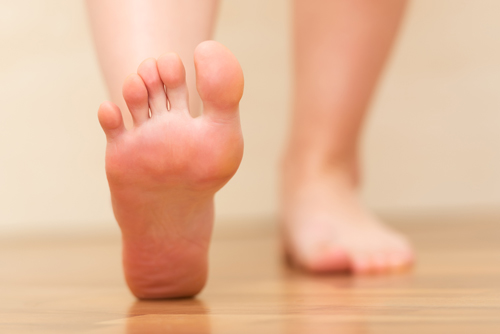
Tread Carefully with Tarsal Tunnel Syndrome
What is Tarsal Tunnel Syndrome?
Tarsal tunnel syndrome occurs when there is abnormal pressure on the posterior tibial nerve in the foot.
Symptoms of Tarsal Tunnel Syndrome:
- A burning or tingling pain in the sole of the foot
- Your foot “giving out” during certain physical activities
- Pain typically worsening with activities such as standing or walking for extended periods
- Potential numbness or weakness
Causes of Tarsal Tunnel Syndrome:
- Swollen varicose veins
- Swelling from diabetes
- Inflammation in tissues around the nerve
It is similar to carpal tunnel syndrome, which affects the wrist.
Treatment Options
Conservative Treatments
- Medication: Cortisone injections can sometimes alleviate symptoms.
- Physical Therapy: This is a crucial part of any treatment program and can also help with pronation—flattened arches that contribute to the condition.
- Orthotic Inserts: Finding the best orthotic inserts for your shoes can support your arch and reduce pressure on the nerve.
- Other Treatments: Ice packs, hydrotherapy, soft tissue massage, taping the foot, and electrical stimulation can also be beneficial.
Surgical Interventions
In severe cases where conservative treatments do not provide relief, surgery may be required to relieve pressure on the nerve.
Surgical options include:
- Decompression Surgery: Relieves pressure on the posterior tibial nerve by cutting the tissue compressing it.
- Tarsal Tunnel Release: Involves removing or releasing structures that are constricting the nerve.
- Nerve Decompression: Directly targets the affected nerve to reduce pressure and alleviate symptoms.
Each surgical approach aims to alleviate the pressure on the nerve and restore normal function to the foot.
Role of Physical Therapy
Goals of Physical Therapy
Physical therapy is essential for safely regaining strength and mobility and focuses on:
- Controlling Pain, Swelling, and Inflammation: Through various exercises and techniques.
- Protecting the Joint and Nerve: To prevent further injury.
- Ensuring Normal Gait Mechanics: For walking and running.
- Supporting Return to Sports and Activities: To regain full functionality.
Types of Physical Therapy Exercises
- Active Movements and Range-of-Motion Exercises: Focus on the ankle and toes.
- Strengthening Exercises: Target the muscles that support the ankle and arch.
- Special Stretches: Aim to mobilize the affected nerves.
Did you know you have Direct Access* to Physical Therapy? No referral, no problem!
Start Managing Tarsal Tunnel Syndrome Today
Dealing with tarsal tunnel syndrome can be frustrating and painful, but with the right treatment plan and physical therapy, you can manage your symptoms and get back to enjoying life without pain.
Stay positive, stay consistent with your exercises, and don’t hesitate to reach out for help. Your path to recovery is just a step away.
The Jackson Clinics serves 18 locations throughout Northern Virginia.
Find one near you: https://thejacksonclinics.com/locations/









